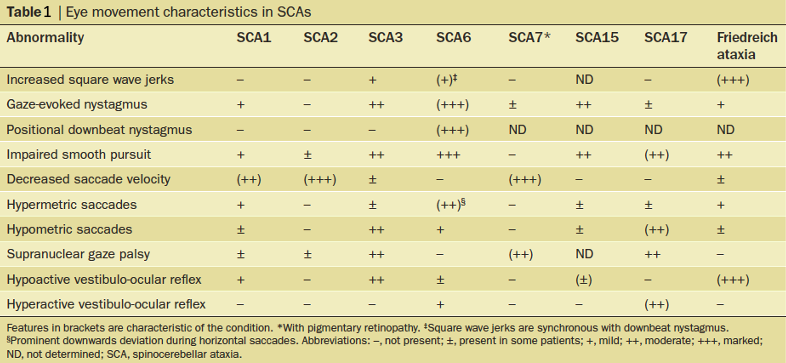Clinical highlights – June 2023
We are thrilled to inform you about the clinical benefits of eye tracking. Every month, we keep you updated on the latest news shared by the scientific community. The current newsletter will emphasize the latest research on Spinocerebellar Ataxia.
Enjoy the read!
The neuroClues® Team
Spinocerebellar Ataxia1
Neurodegenerative cerebellar ataxia is a diverse collection of diseases that are unified by gait and balance abnormalities, appendicular incoordination, and abnormalities of eye movement and speech. It affects about 1 to 5 people per 100,000.
The differential diagnosis is broad, ranging from paraneoplastic syndromes that progress quite rapidly to unidentified genetic disorders that progress slowly over the course of decades.
The pillars of treatment are physical, occupational and speech therapy, as well as counseling and discussions about disease prognosis, genetics and reproductive choices.
Source: Rosenthal LS. Neurodegenerative Cerebellar Ataxia. Continuum (Minneap Minn). 2022
Clinical update on the relevance of eye tracking for Spinocerebellar Ataxia
Our scientists compiled a list of clinical studies related to the analysis of eye movements for the early diagnosis, differential diagnosis and follow-up of Spinocerebellar Ataxia.
Scale for Ocular motor Disorders in Ataxia (SODA) helps to follow up on disease progression
A consortium of neurologists was formed with the aim to design and validate a novel Scale for Ocular motor Disorders in Ataxia (SODA).
The primary purpose of the scale is to identify ocular motor dysfunctions in patients with cerebellar ataxia.
The researchers revealed in the study that the scale reliably measured the extent of saccade abnormalities and nystagmus.
Eye movements in patients help differentiate across spinocerebellar ataxias
Researchers came to the conclusion that careful clinical examination of eye movements in patients with neurodegenerative disorders is an invaluable adjunct to neurological and cognitive assessments. Laboratory recordings of eye movements can provide valuable information about disease severity and progression.
As reported in Table 1 below, eye movement abnormalities are common in patients with spinocerebellar ataxia (SCA) and reflect the combination of pure cerebellar degeneration and involvement of other brain regions.

Specific oculomotor hallmarks that aid diagnosis in spinocerebellar ataxia (SCA) are very slowed saccades in SCA2 and SCA7, positional downbeat nystagmus in SCA6, and hypoactive vestibulo-ocular reflex in Friedreich ataxia
Anderson TJ et al. in Nat Rev Neurol. 2013

